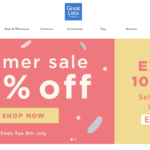Every business needs to stand out in a crowded market, and a unique selling proposition (USP) is key to achieving that. A unique selling proposition clearly defines what makes a business different from its competitors, helping it attract and retain customers. When done right, a USP not only draws in new customers but also builds loyalty among existing ones.
Crafting an effective USP involves understanding customer needs and how a product or service meets those needs better than others. By analyzing competitors and identifying unique benefits, a business can develop a strong statement that resonates with its target audience. Successful brands demonstrate that a well-defined USP can significantly impact growth and customer connection.
Creating a clear and effective USP is an essential step for any business aiming to thrive. It serves as the foundation for marketing strategies and customer engagement efforts, ensuring clarity and consistency in messaging.
Key Takeaways
- A unique selling proposition helps businesses differentiate themselves in the market.
- Understanding customer needs is crucial for developing a strong USP.
- A well-communicated USP fosters customer loyalty and drives business growth.
Defining Unique Selling Proposition
A unique selling proposition (USP) is essential for any business aiming to stand out. It defines what makes a product or service different, helping customers understand why they should choose one brand over another. This section delves into its history and key components.
History and Evolution
The concept of the unique selling proposition emerged in the 1940s. Advertising executive Rosser Reeves popularized the term while working at the Ted Bates advertising agency. He emphasized that a successful advertisement must communicate a clear and unique benefit.
Over the decades, many brands have adapted the idea to their marketing strategies. Companies began to focus on what made their offerings distinct, which created a shift in advertising. In the current digital age, a USP helps brands connect with specific target audiences and convey a strong message.
Components of a Strong USP
A strong USP contains several key elements:
- Clarity: The statement should be clear and easy to understand. Customers should grasp the message quickly.
- Specificity: It must highlight a distinct benefit or feature. Generic statements are less effective.
- Relevance: A USP should meet the needs of the target audience. Understanding the audience is crucial.
For example, a pizza restaurant might emphasize using organic ingredients or a unique flavor that competitors don’t offer. This distinct quality not only draws attention but also helps build brand loyalty, encouraging customers to choose this restaurant over others.
Developing Your USP
Creating a unique selling proposition (USP) involves a clear understanding of customers’ needs, effective market research, and distinct differentiation strategies. Each step helps businesses stand out and connect with their audience.
Identifying Target Market Needs
Understanding what the target market wants is crucial to developing a strong USP. This involves researching customer pain points and motivations.
Methods to identify these needs include:
- Surveys: Ask direct questions to gather feedback.
- Interviews: Conduct one-on-one discussions for deeper insights.
- Focus Groups: Collect diverse consumer opinions in a group setting.
Analyzing this information can reveal trends and preferences. Businesses can tailor their USPs based on these insights. They need to address specific issues customers face. This makes the USP relevant and compelling.
Leveraging Market Research
Market research is vital for creating an effective USP. It helps businesses understand their competition and industry landscape. Businesses should gather data on competitors’ offerings, pricing, and customer reviews.
Tools for market research include:
- SWOT Analysis: Identify strengths, weaknesses, opportunities, and threats.
- Competitor Analysis: Study direct and indirect competitors.
- Industry Reports: Review data and trends in the market.
Using this information allows businesses to spot gaps in the market. They can position themselves uniquely by addressing these gaps in their USPs.
Differentiation Strategies
Differentiation is about highlighting what makes a business unique. This can be achieved through several approaches.
Some effective strategies are:
- Quality: Offer superior products or services.
- Customer Service: Provide exceptional support or personalized experiences.
- Innovation: Introduce unique features unavailable from competitors.
Business owners should communicate their differentiating factors clearly. The USP should reflect these differences, making it easy for potential customers to understand why they should choose one brand over another.
Case Studies
Case studies provide concrete examples of how unique selling propositions (USPs) can drive success or highlight pitfalls that companies should avoid. Analyzing these examples helps identify effective strategies in developing a USP.
Successful USP Examples
One well-known example of a successful USP is Apple. The company emphasizes innovation and design in its products. Their USP is not just about electronics; it is about creating a community and lifestyle centered around creativity and ease of use. This focus has built a loyal customer base.
Another example is Tiffany & Co. Their USP, “The right one is worth waiting for,” captures the essence of quality and exclusivity. This clever phrasing differentiates them in the engagement ring market, making their products synonymous with love and commitment.
Common Pitfalls to Avoid
Many businesses fall into the trap of having a vague or overly broad USP. This dilutes their message and confuses potential customers. A USP must clearly communicate what a company offers that is distinct from competitors.
Another common mistake is failing to focus on customer needs. A USP should never prioritize company values over consumer desires. For instance, if a business highlights features that aren’t relevant to customers, it risks losing engagement and sales.
Lastly, inconsistency in messaging can erode trust. If a company’s actions don’t align with its stated USP, customers may feel misled. Keeping the USP clear and true to the brand is essential for maintaining credibility.
Implementing and Communicating Your USP

To successfully implement and communicate a unique selling proposition (USP), a business must focus on strategic marketing and branding. This involves clearly integrating the USP into various channels and ensuring it resonates with the target audience.
Marketing and Advertising
When developing marketing strategies, the USP should be front and center. Businesses can use several methods to highlight their USP effectively:
- Clear Messaging: Ensure that ads directly state the unique benefits offered. Use simple language that is easy to understand.
- Targeted Campaigns: Tailor marketing efforts to address specific customer pain points that the USP solves.
- Visual Elements: Use images and graphics in promotions that reinforce the USP message. Consistency in visual branding helps solidify recognition.
The USP should be reflected across all advertising platforms. Whether online or offline, consistent messaging builds trust and makes the brand memorable.
Incorporating USP into Branding
Branding is more than just a logo; it includes the entire customer experience. A strong USP should be woven throughout various aspects of the brand:
- Brand Voice: The tone used in communications should align with the USP. For example, a brand that emphasizes sustainability should use eco-friendly language in all its messaging.
- Design and Imagery: All branding elements, from colors to fonts, should connect back to the brand’s unique features. This visual consistency helps reinforce the USP.
- Customer Interactions: Train employees to communicate the USP effectively during customer interactions. This creates a seamless experience from marketing to sale.
By embedding the USP in every part of the brand, businesses ensure that customers clearly understand what sets them apart.




